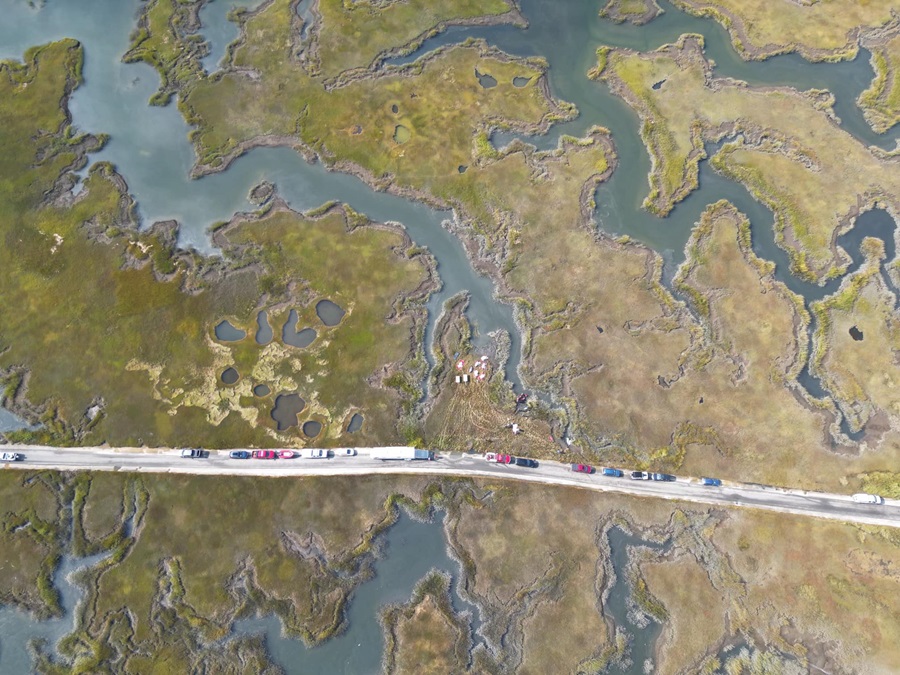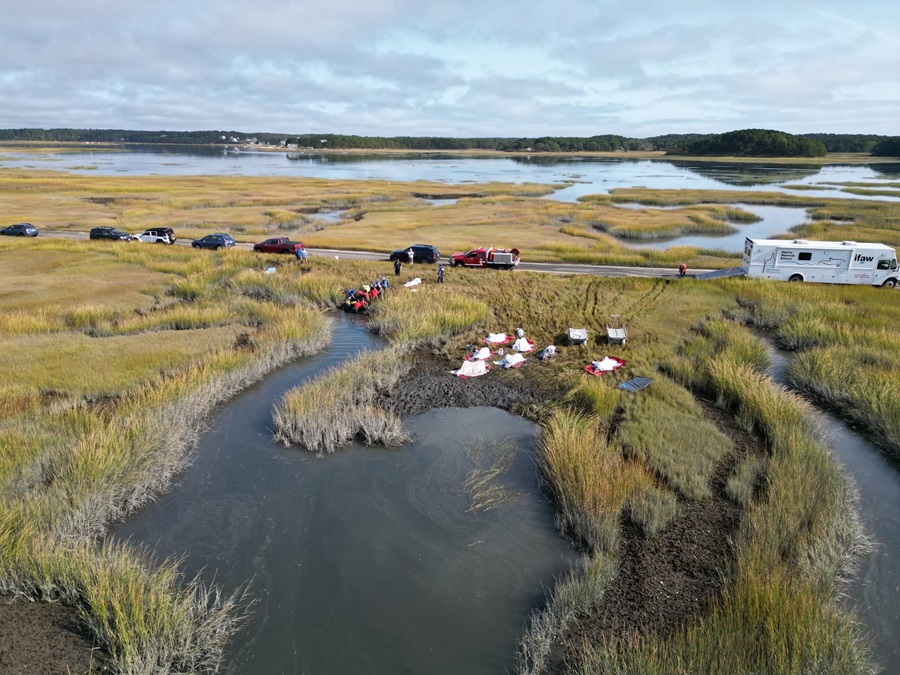
The International Fund for Animal Welfare (IFAW) was alerted to the re-stranding at about 7 a.m. on Tuesday, but according to Kira Kasper, one of the organization’s biologists, the tide was incoming, and the dolphins could not be released where they stranded. Instead, IFAW worked to extract the animals from the mud and transport them to Herring Cove in Provincetown, where they were all released.
According to IFAW’s press release about the stranding, this offshore species tends to be larger and more robust than its coastal counterparts and is typically found farther from shore. This marked the largest bottlenose dolphin mass stranding in the Northeast region.
Shallow waters and complex tidal movements such as those visible in this drone photograph off Lieutenant Island Road can disorient dolphins, leading them to strand, according to IFAW. (Photos courtesy Wellfleet Fire Dept.)

